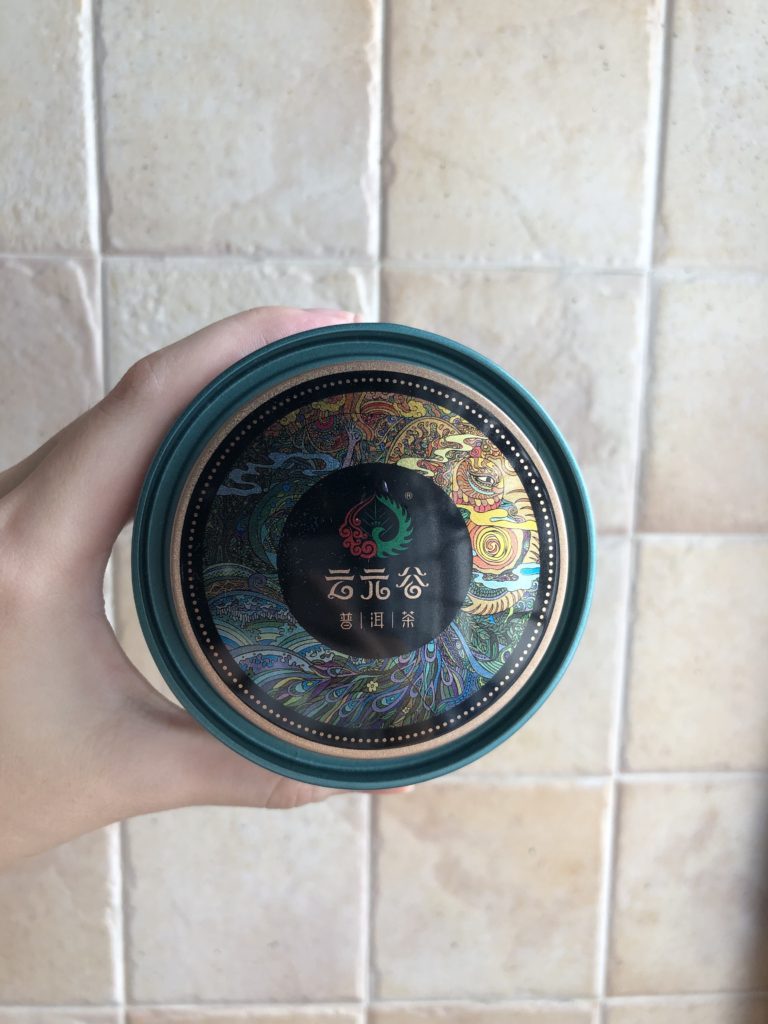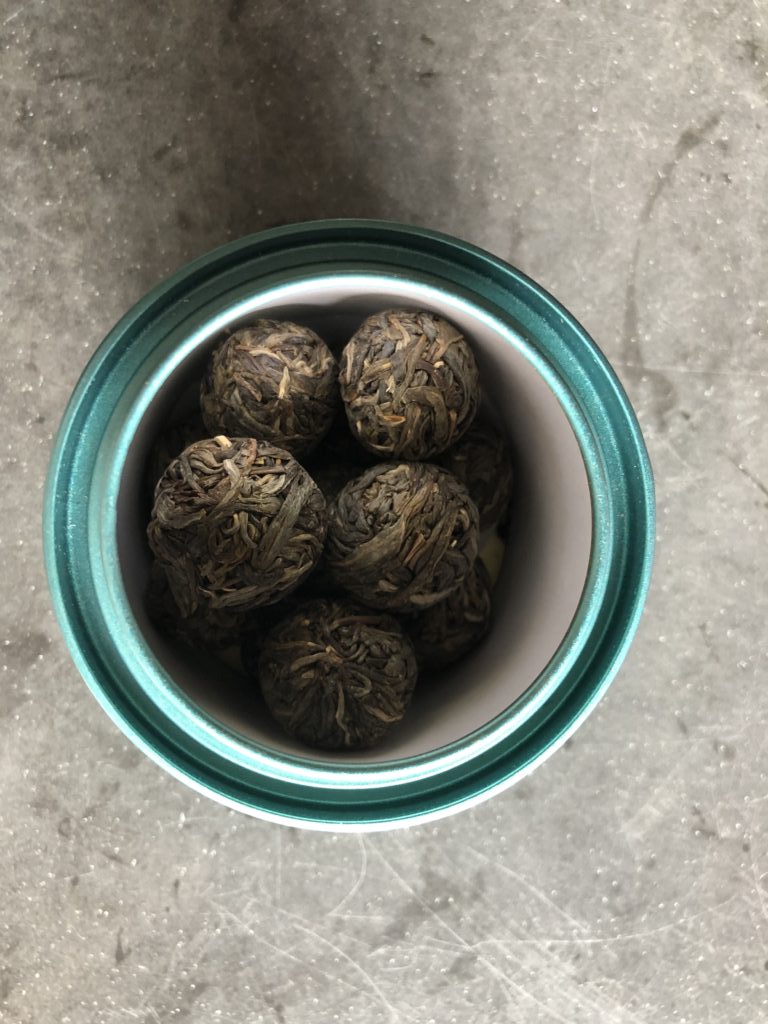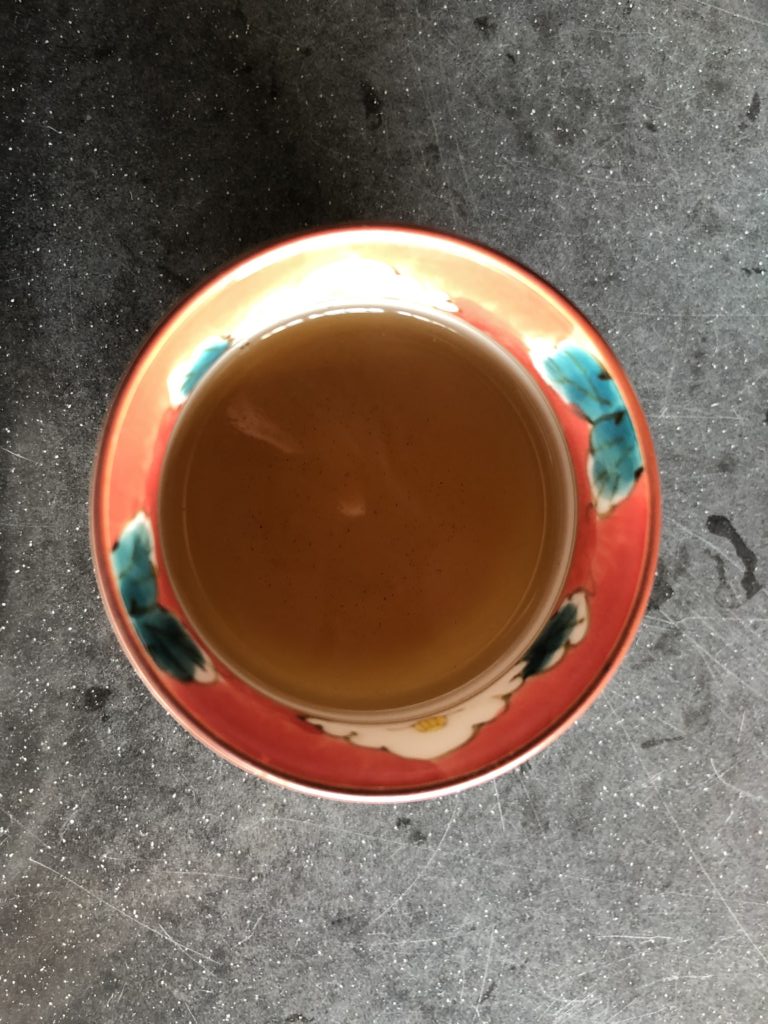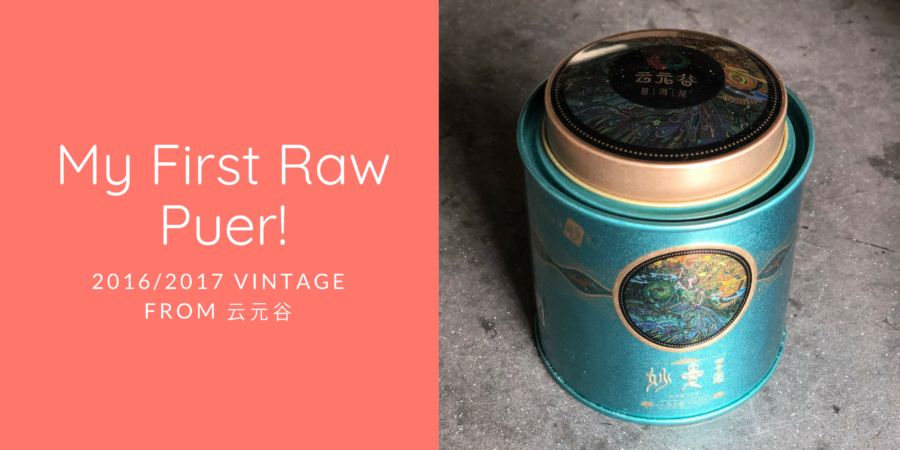After reading Nicole’s review of Mei Mei Fine Tea’s Bing Dao Ancient Raw Pu’erh Tea Dragon Balls, I remarked to my colleague that the idea of puer balls was very cool and that I wished I could try them. Before I could say anything else, she pulled out a gorgeous can of – you’ve guessed it – raw puer balls out of the tea box and passed them to me.
I’ve got to add a disclaimer to this post: I’m not a very big puer drinker and when I do drink it, I drink ripe puer because it’s easier on my palate. This is my first raw puer and it’s not so much a tea review as me recording down my first encounter with this tea (hopefully it won’t be the last and I’ll get to look back on this and be all “was that how I found the tea?”)

The puer is from 云元谷 (Yun Yuan Gu) and my colleague this at one of the tea fairs last year(can’t remember if it’s Taiwan or Guangdong because she went to both). It’s supposed to be from 2016/2017, so it’s a pretty young vintage.

I’m pretty used to drinking chenpi puer, which I guess is technically in a ball form, but I’ve always felt that chenpi puer is more of loose ripe puer packed into the fruit. It’s delicious but totally different from this.
Not going to lie, I wasn’t sure if this needed to be rinsed since a rinse would only cover the outer leaves, but I couldn’t really find anything about what to do so I rinsed the tea once before brewing.

The first steep was about 30 seconds and it gave a lovely golden tea liquor. It smelled a lot like green tea but earthier – I suppose this is to be expected because it’s quite a young puer. Taste-wise, it had very pronounced vegetal notes with very little hints of grassiness. I liked the astringency, but I found it a bit on the bitter side.
Subsequent steeps got shorter and shorter as the leaves unfurled but the only difference I noticed as an increasing bitterness (guess my shortened steeps weren’t enough) and an increasing earthy taste. It was also pretty harsh on my stomach and I found that I couldn’t drink too much without aggravating my gastric despite drinking this after lunch.
I did bring this back to the office to ask my colleague, Cher, to brew this, just in case I messed it up because she’s a lot more familiar with Chinese tea than I am. The tea brewed there had the same deep vegetal and earthy notes, which came as a bit of a relief because at least I didn’t mess up my first brewing of raw puer.
To be honest, I don’t think I’m quite ready for raw puer yet. I would be interested in trying different vintages, but I’m not exactly inspired to go out and buy more to experiment with. But I am trying to keep an open mind and if I ever get offered raw puer, I’m definitely going to try it. For now, though, I’ve found out that we also have ripe puer tea balls from 云元谷, so I may grab some of that to try brewing over the weekend. If you have any tips on how to do that (I’ve only ever made ripe puer from cakes, which shows you how little I drink this), please let me know!

Thank you for linking my blog post! Raw puerh definitely takes some getting used to. I didn’t like it at all for a long time but now I love it. Lowering your water temperature could help with the bitterness. I know a few people who treat it almost like a green tea for that reason.
Oooh, that’s a good tip! I’ll try lowering the temperature next time I try!